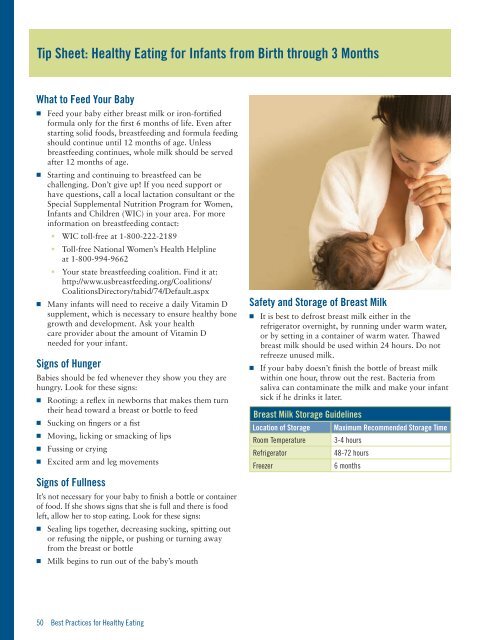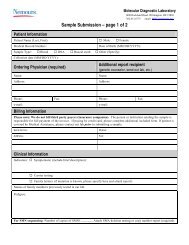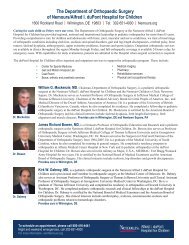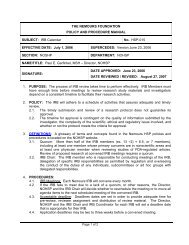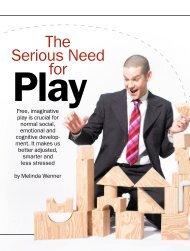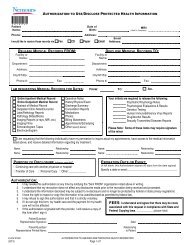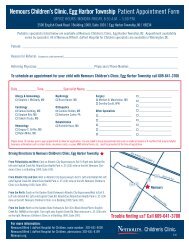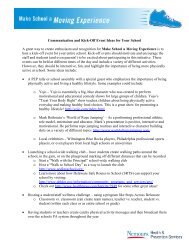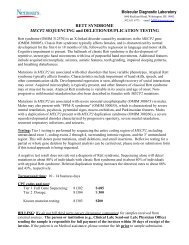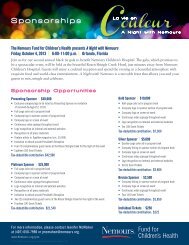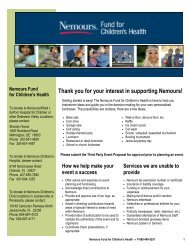Best Practices for Healthy Eating Guide - Nemours
Best Practices for Healthy Eating Guide - Nemours
Best Practices for Healthy Eating Guide - Nemours
You also want an ePaper? Increase the reach of your titles
YUMPU automatically turns print PDFs into web optimized ePapers that Google loves.
Tip Sheet: <strong>Healthy</strong> <strong>Eating</strong> <strong>for</strong> Infants from Birth through 3 Months<br />
What to Feed Your Baby<br />
n Feed your baby either breast milk or iron-<strong>for</strong>tified<br />
<strong>for</strong>mula only <strong>for</strong> the first 6 months of life. Even after<br />
starting solid foods, breastfeeding and <strong>for</strong>mula feeding<br />
should continue until 12 months of age. Unless<br />
breastfeeding continues, whole milk should be served<br />
after 12 months of age.<br />
n Starting and continuing to breastfeed can be<br />
challenging. Don’t give up! If you need support or<br />
have questions, call a local lactation consultant or the<br />
Special Supplemental Nutrition Program <strong>for</strong> Women,<br />
Infants and Children (WIC) in your area. For more<br />
in<strong>for</strong>mation on breastfeeding contact:<br />
• WIC toll-free at 1-800-222-2189<br />
• Toll-free National Women’s Health Helpline<br />
at 1-800-994-9662<br />
• Your state breastfeeding coalition. Find it at:<br />
http://www.usbreastfeeding.org/Coalitions/<br />
CoalitionsDirectory/tabid/74/Default.aspx<br />
n Many infants will need to receive a daily Vitamin D<br />
supplement, which is necessary to ensure healthy bone<br />
growth and development. Ask your health<br />
care provider about the amount of Vitamin D<br />
needed <strong>for</strong> your infant.<br />
Signs of Hunger<br />
Babies should be fed whenever they show you they are<br />
hungry. Look <strong>for</strong> these signs:<br />
n Rooting: a reflex in newborns that makes them turn<br />
their head toward a breast or bottle to feed<br />
n Sucking on fingers or a fist<br />
n Moving, licking or smacking of lips<br />
n Fussing or crying<br />
n Excited arm and leg movements<br />
Signs of Fullness<br />
It’s not necessary <strong>for</strong> your baby to finish a bottle or container<br />
of food. If she shows signs that she is full and there is food<br />
left, allow her to stop eating. Look <strong>for</strong> these signs:<br />
n Sealing lips together, decreasing sucking, spitting out<br />
or refusing the nipple, or pushing or turning away<br />
from the breast or bottle<br />
n Milk begins to run out of the baby’s mouth<br />
Safety and Storage of Breast Milk<br />
n It is best to defrost breast milk either in the<br />
refrigerator overnight, by running under warm water,<br />
or by setting in a container of warm water. Thawed<br />
breast milk should be used within 24 hours. Do not<br />
refreeze unused milk.<br />
n If your baby doesn’t finish the bottle of breast milk<br />
within one hour, throw out the rest. Bacteria from<br />
saliva can contaminate the milk and make your infant<br />
sick if he drinks it later.<br />
Breast Milk Storage <strong>Guide</strong>lines<br />
Location of Storage Maximum Recommended Storage Time<br />
Room Temperature 3-4 hours<br />
Refrigerator<br />
48-72 hours<br />
Freezer<br />
6 months<br />
50 <strong>Best</strong> <strong>Practices</strong> <strong>for</strong> <strong>Healthy</strong> <strong>Eating</strong>


